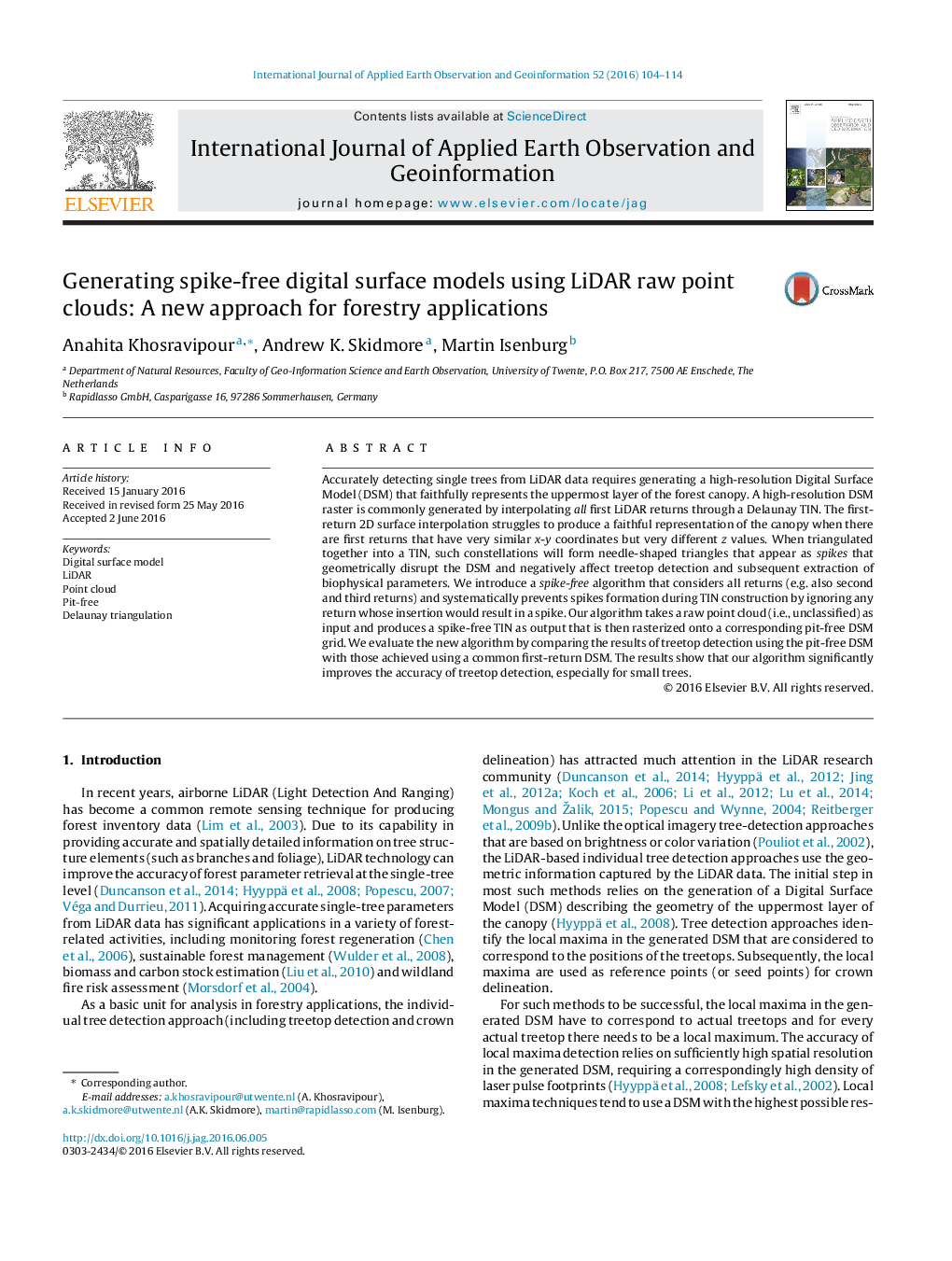| Article ID | Journal | Published Year | Pages | File Type |
|---|---|---|---|---|
| 6348473 | International Journal of Applied Earth Observation and Geoinformation | 2016 | 11 Pages |
Abstract
Accurately detecting single trees from LiDAR data requires generating a high-resolution Digital Surface Model (DSM) that faithfully represents the uppermost layer of the forest canopy. A high-resolution DSM raster is commonly generated by interpolating all first LiDAR returns through a Delaunay TIN. The first-return 2D surface interpolation struggles to produce a faithful representation of the canopy when there are first returns that have very similar x-y coordinates but very different z values. When triangulated together into a TIN, such constellations will form needle-shaped triangles that appear as spikes that geometrically disrupt the DSM and negatively affect treetop detection and subsequent extraction of biophysical parameters. We introduce a spike-free algorithm that considers all returns (e.g. also second and third returns) and systematically prevents spikes formation during TIN construction by ignoring any return whose insertion would result in a spike. Our algorithm takes a raw point cloud (i.e., unclassified) as input and produces a spike-free TIN as output that is then rasterized onto a corresponding pit-free DSM grid. We evaluate the new algorithm by comparing the results of treetop detection using the pit-free DSM with those achieved using a common first-return DSM. The results show that our algorithm significantly improves the accuracy of treetop detection, especially for small trees.
Related Topics
Physical Sciences and Engineering
Earth and Planetary Sciences
Computers in Earth Sciences
Authors
Anahita Khosravipour, Andrew K. Skidmore, Martin Isenburg,
